15 Cobblestone Structures in NY
A roundup of fifteen examples of cobblestone buildings in Upstate New York.
by Chris Clemens
I thought I’d give myself a bit of a challenge this year. So I’m sending myself on a statewide scavenger hunt.
Each month in 2015 I’ll choose a new item to focus on. Then I’ll set out to find 15 examples from around the state and share them in one post. For now, I’ve made a tentative list of 12 ideas. But if there’s something you think represents the landscape of Upstate in some interesting way, I’m open to receiving challenge suggestions!
For my inaugural ’15 in 2015 Challenge’ I’ve chosen the subject of cobblestones.
Basically a large pebble, a cobblestone is one that has naturally been formed by years and years of being tumbled over and over by water until the edges are rounded and smooth. Because much of Upstate New York was covered by glaciers 10,000 years ago, our soil is littered with cobblestones of all sizes. When the Erie Canal was dug between 1817 and 1825, the supply of cobblestones went sky high.
In fact, if you look at a map of cobblestones buildings, you can basically trace the general route of the canal. Our region has the best collection of cobblestone buildings in the entire world!
According to my friends at The Cobblestone Society and Museum in Childs, there are approximately 1,500 cobblestone structures in the U.S. and 90% of them are within a 75 mile radius of Rochester! Additionally, Wayne County boasts more cobblestone structures per capita than any other place on the planet!
I vowed to make these ’15 in 2015 Challenge’ posts less wordy and more photo-y, so without further ado and in no particular order, I present to you:
15 Cobblestone Structures in NY
Alexander, New York
1. The former Alexander Classical School was built in the 1830’s and is one of the few three-story Cobblestone buildings in existence. It is also one of the few to have been built for public use and today is the only cobblestone building that is used as a public space.
Geneva, New York
2. A cobblestone home located on Rt. 14 just south of Geneva.
Victor, New York
3. This Starbucks Coffee location in Victor, NY uses a restored cobblestone structure
Irondequoit, New York
4. This cobblestone smokehouse was originally in a different location, but moved here to the park across from the famous Seabreeze Amusement Park on Culver Road in Irondequoit.
Henrietta, New York
5. The Tinker Homestead Museum was built in 1830 and now is a historic landmark museum located in a nature park in Henrietta.
Henrietta, New York
6. Just around the corner from the Tinker Museum, this one is on Pinnacle Road in Henrietta just south of Caulkins Road.
Pittsford, New York
7. The Cobblestone Academy building in Pittsford, NY was first built as a school in 1842 by Samuel Crump. It was later repurposed and is now Masonic Lodge #426.
Greece, New York
8. Placed on the National Register of Historic Places in 1995, the William Covert cobblestone house in Greece was built in 1832.
Spencerport, New York
9. I was able to find exactly NO info on this one located on Route 104 in Spencerport.
Murray, New York
10. An unfortunate victim to negligence on Route 104 near Murray.
Childs, New York
11. The District 5 cobblestone schoolhouse built in 1849 in Childs, NY located on Route 104, part of the Cobblestone Historic District
Childs, New York
12. Private single family cobblestone home in Childs, NY on Route 104.
Childs, New York
13. This private single family cobblestone home in Childs, NY on Route 104 sits next door to the one above!!
Childs, New York
14. The Universalist Church built 1834 that is now part of the Cobblestone Society and Museum just north of Albion.
Childs, New York
15. The Ward House sits next to the Universalist Church above, built in around 1840.
Conesus, New York
BONUS: I’ve always really liked this one so I thought I’d share it too. Located behind The Mission in Conesus, NY (formerly St. Michael’s Mission), this old school bus had cobblestones built up around it by the monks who used live on site, somewhere in the 1970’s and used it as a shed.
There’s plenty more of course so if you have a great example and want to share, be sure to tell me about it in a comment!
Now, on to the next ’15 for 2015′ challenge….

Chris Clemens is the Founder/Publisher of Exploring Upstate. From his hometown in Rochester, he spends as much time as possible connecting with the history, culture, and places that make Upstate New York a land of discovery. Follow him on Twitter at @cpclemens


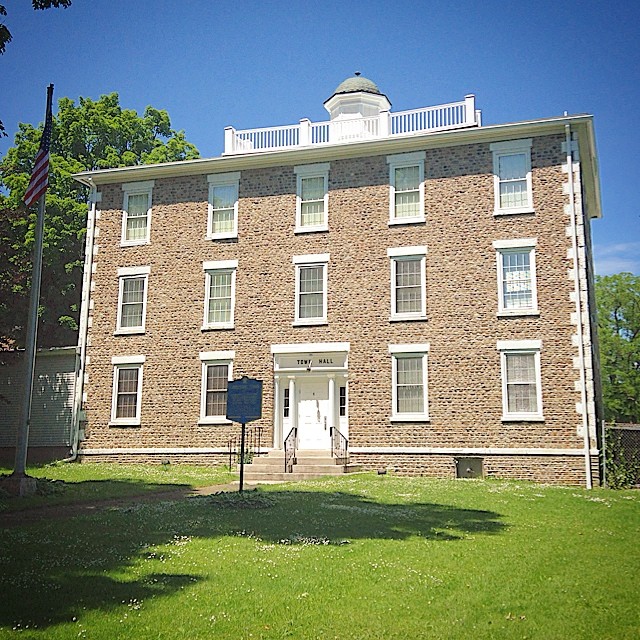
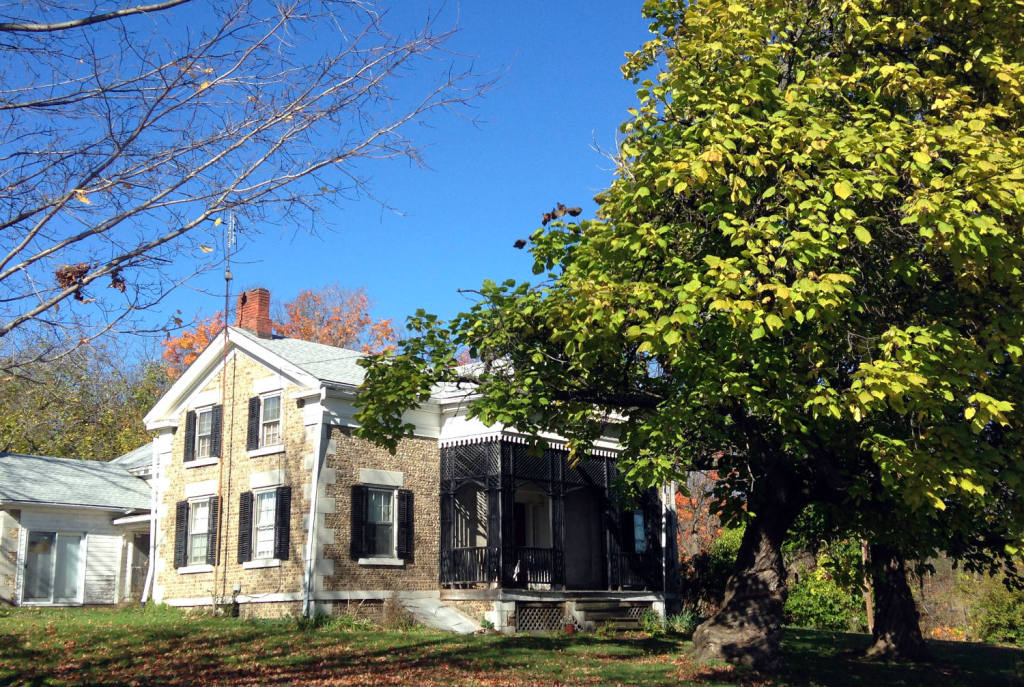
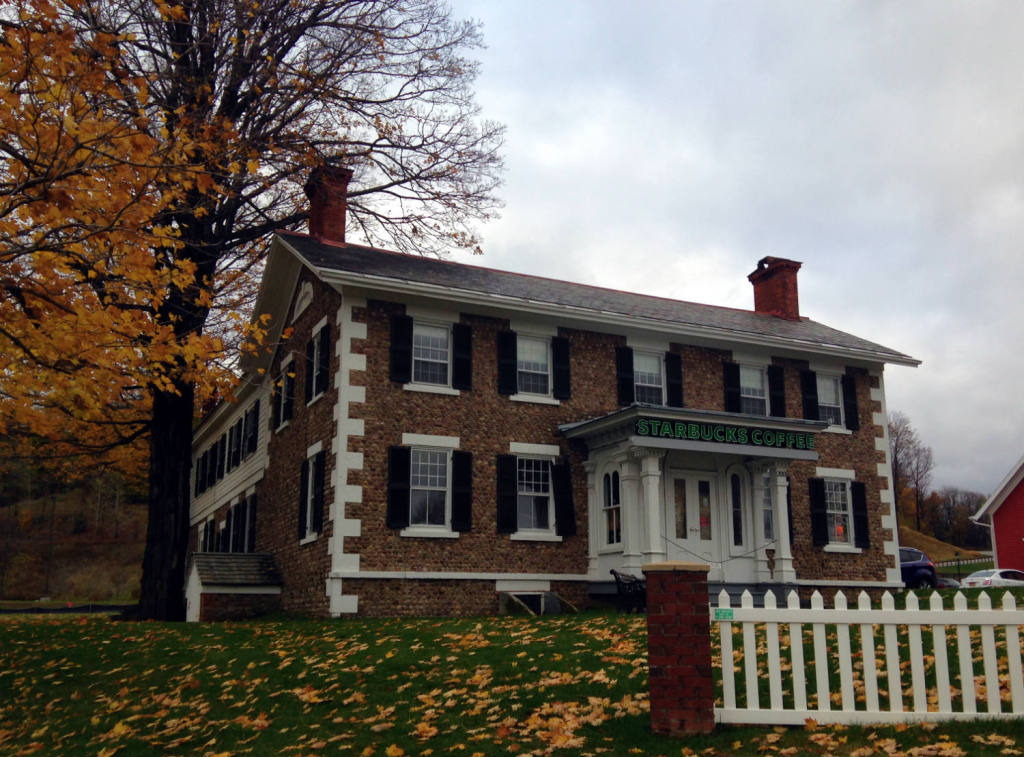
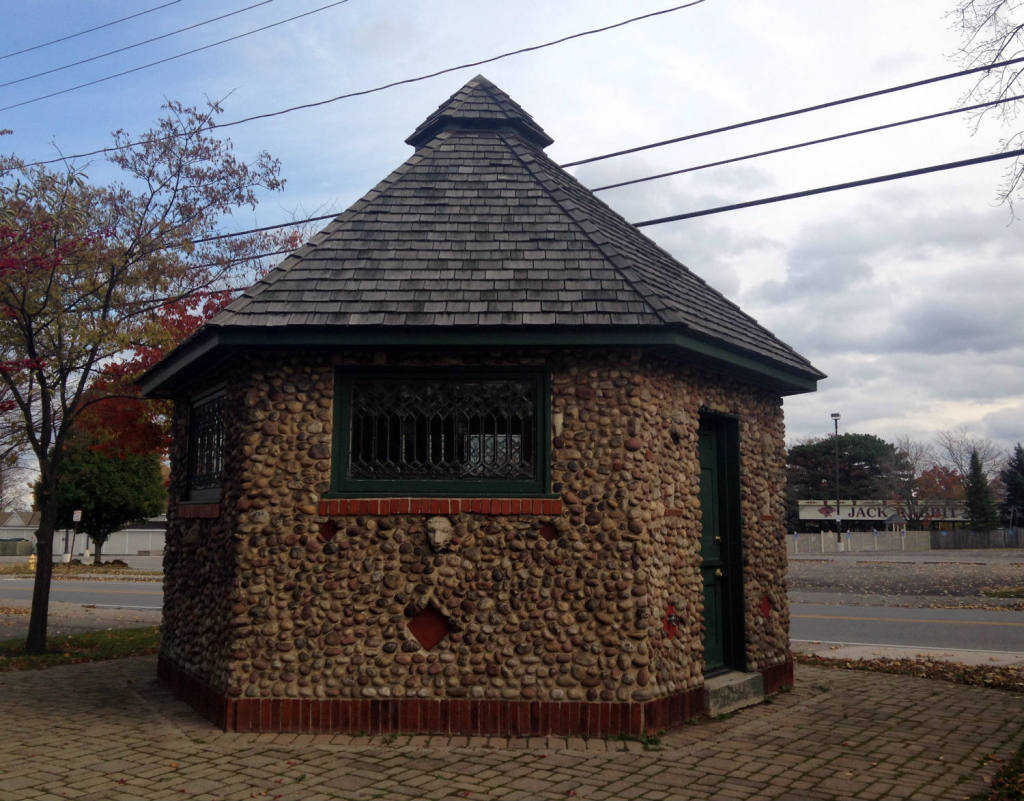
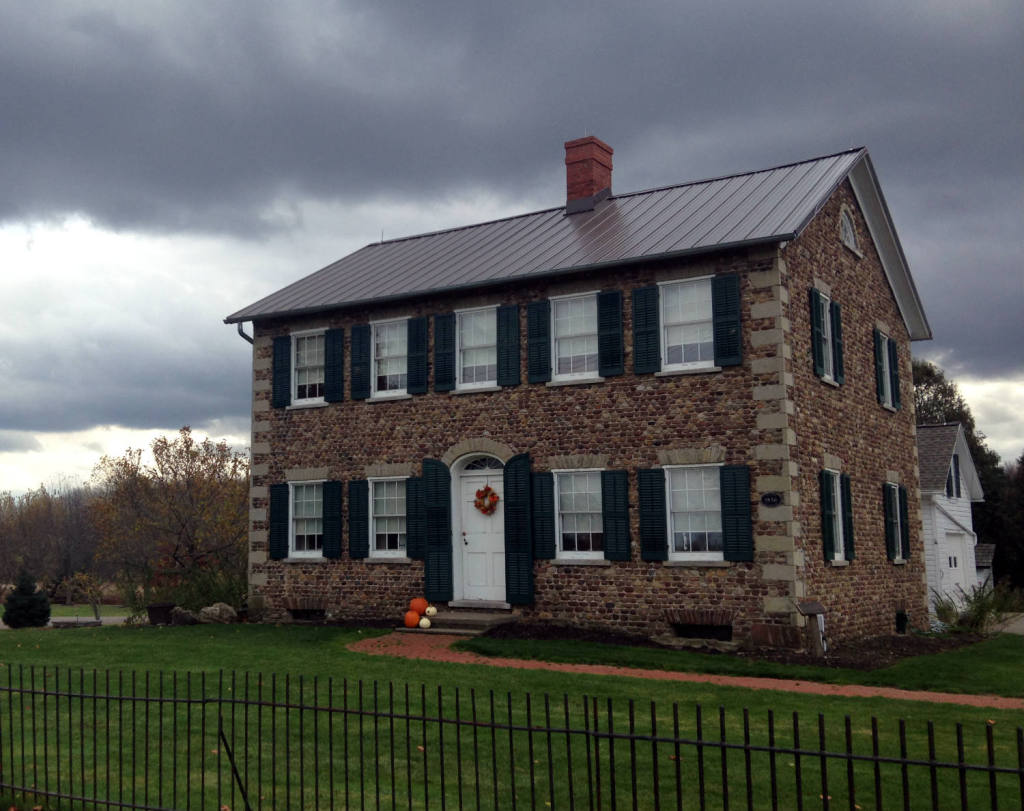

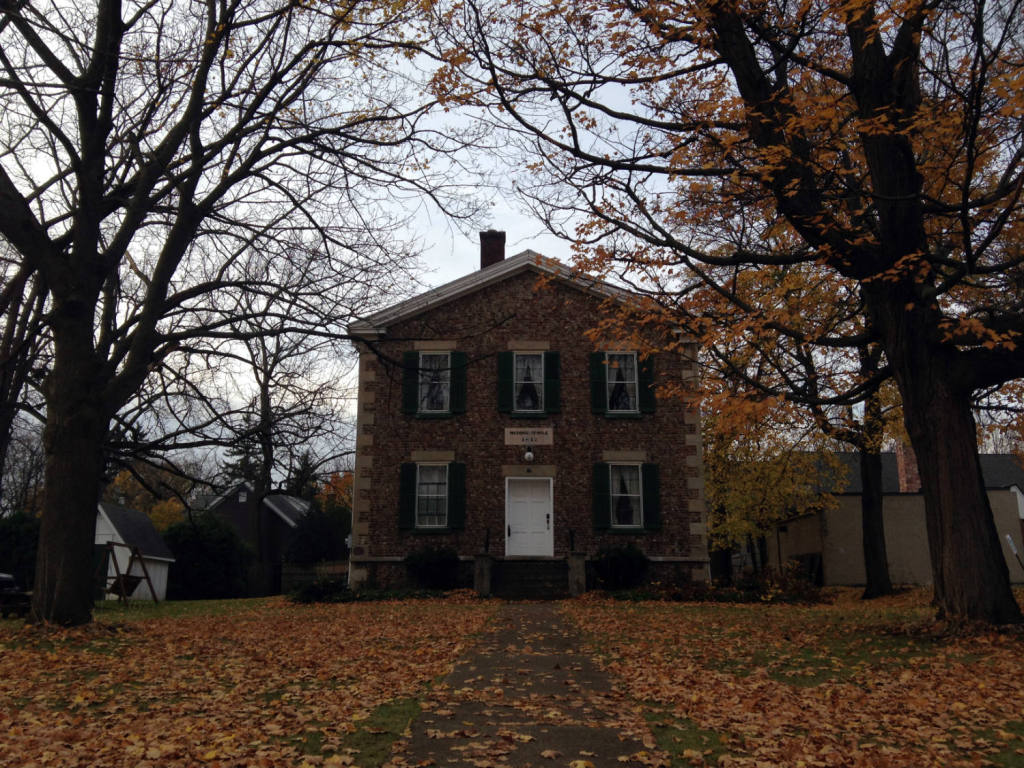
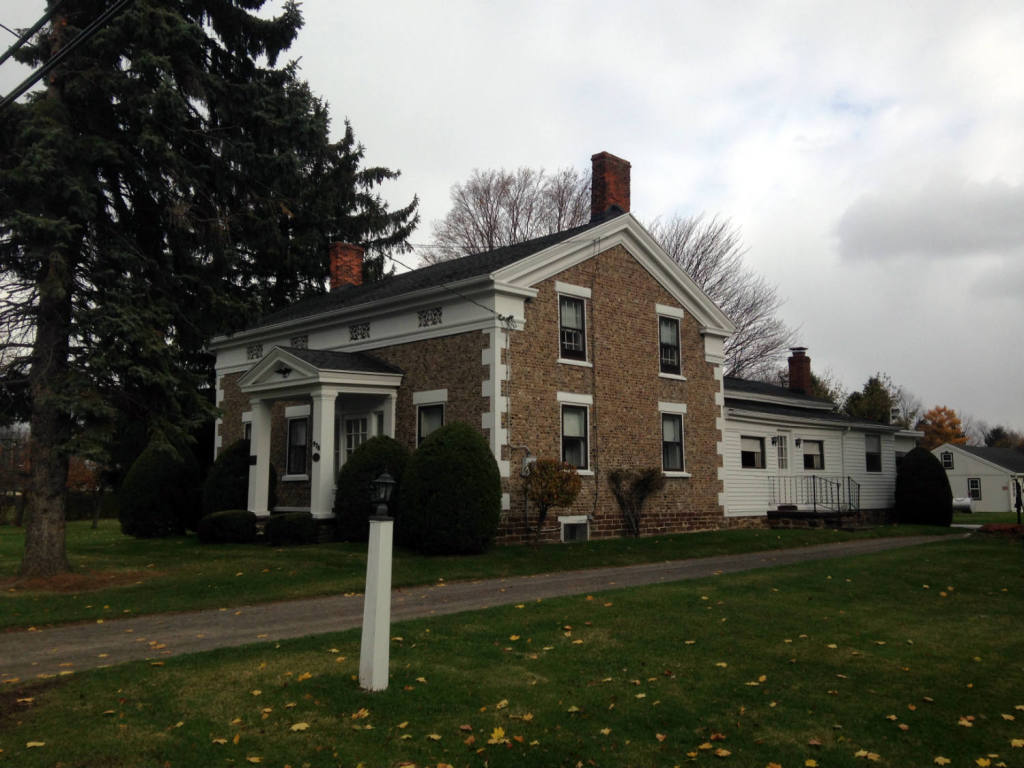
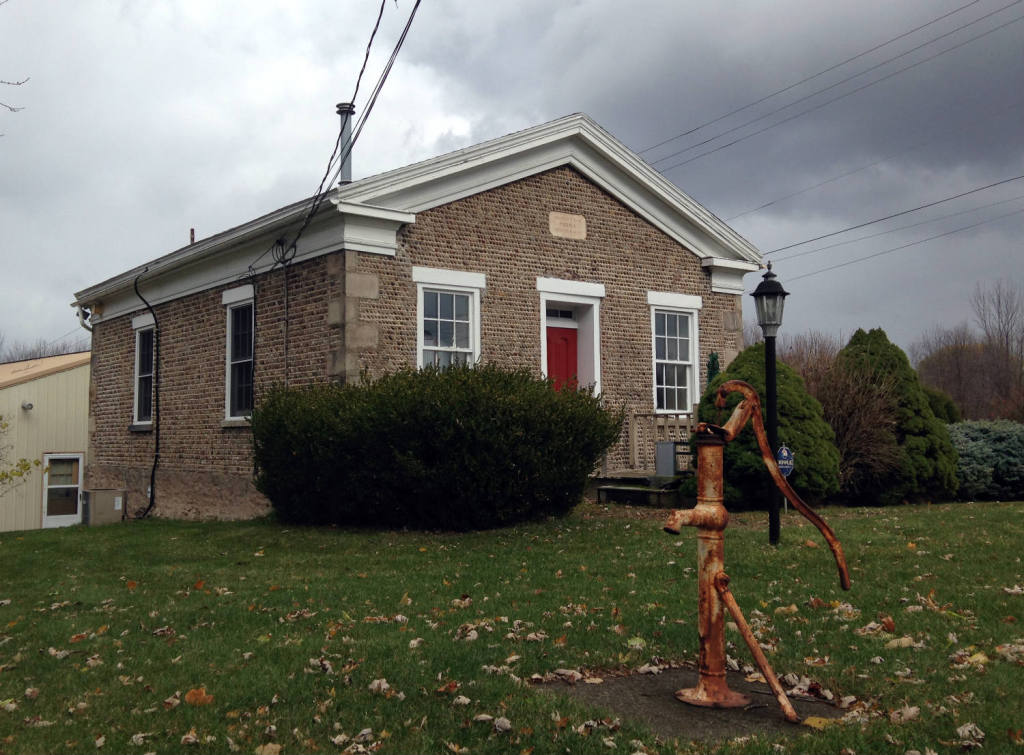
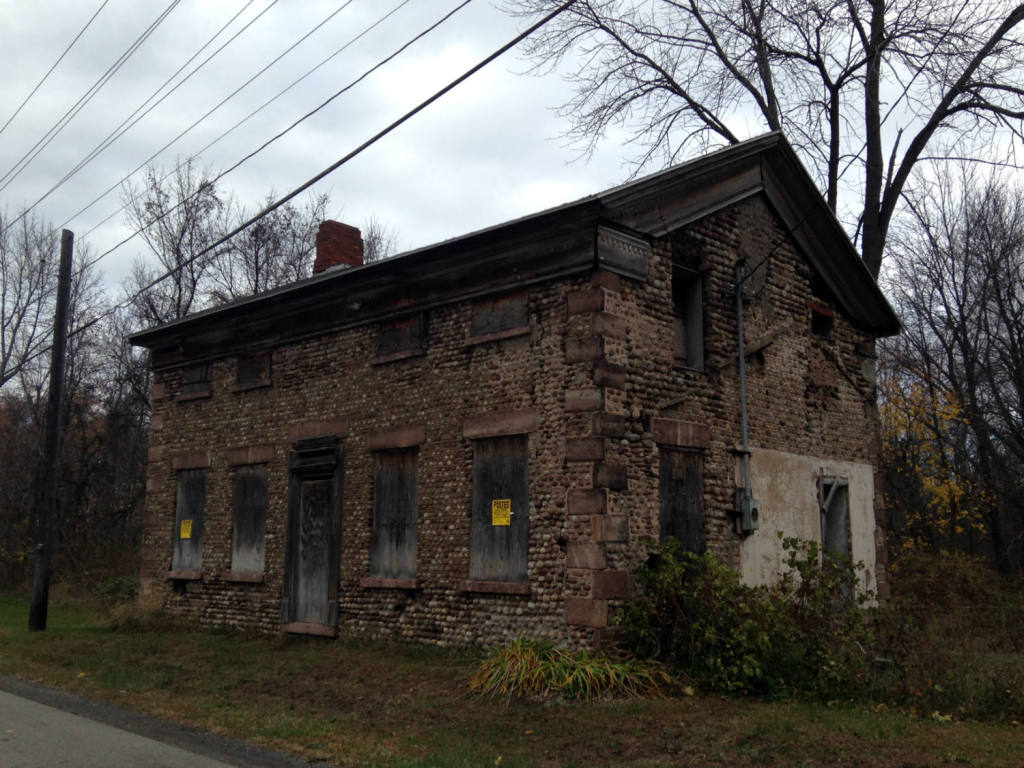
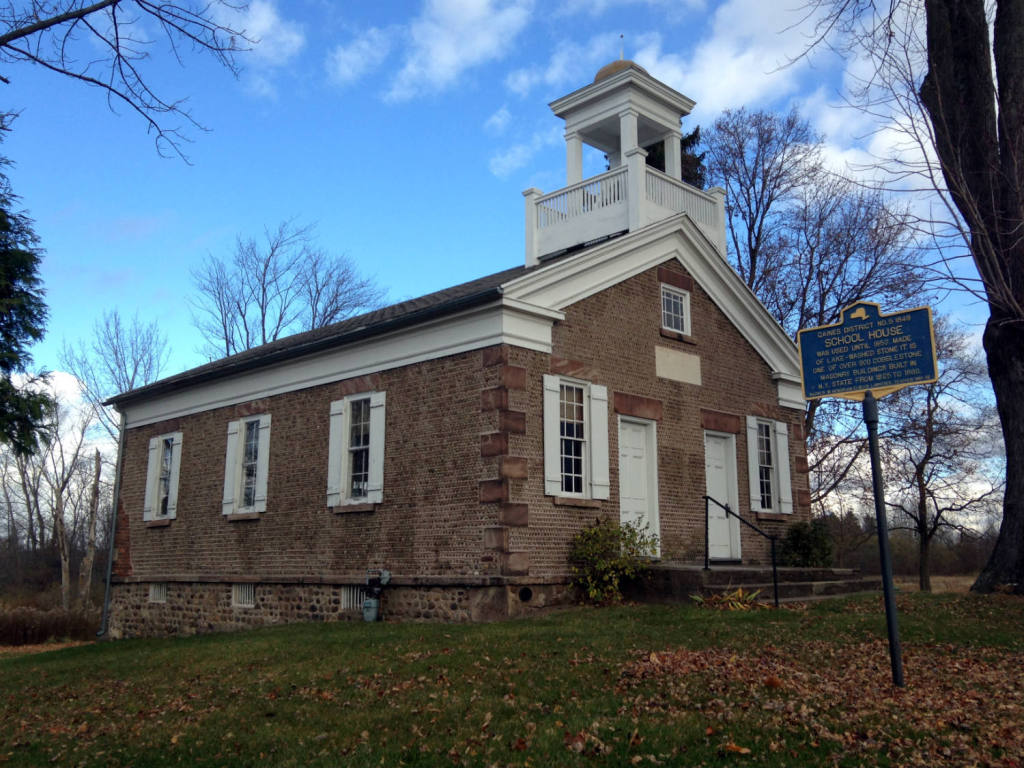
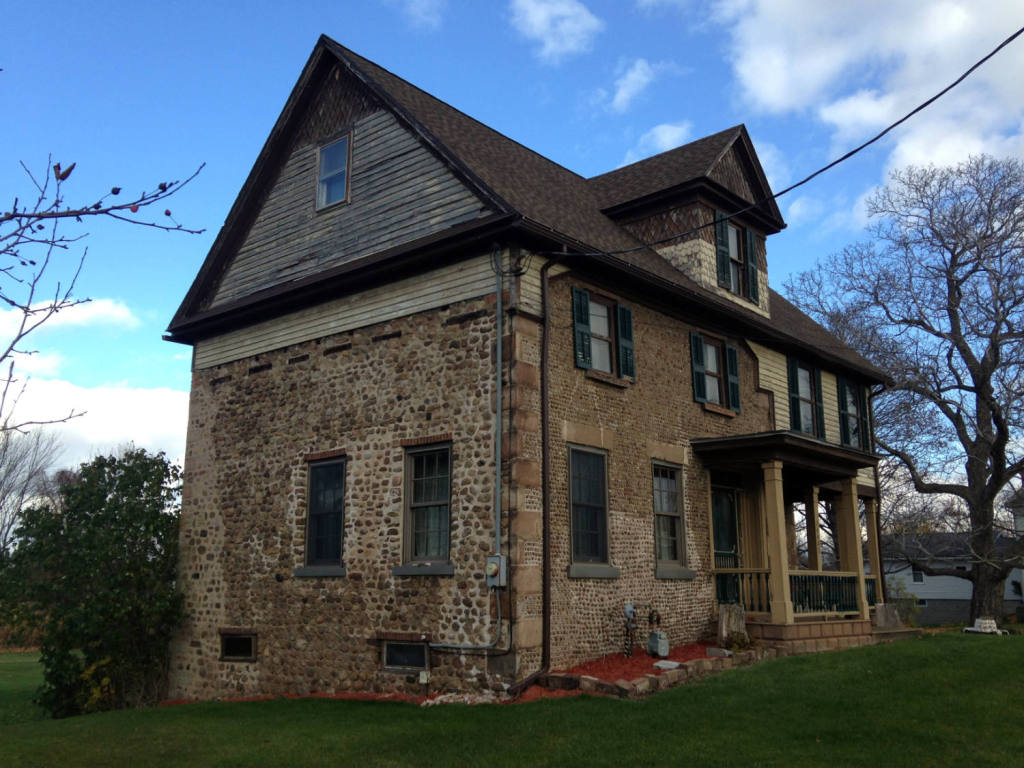
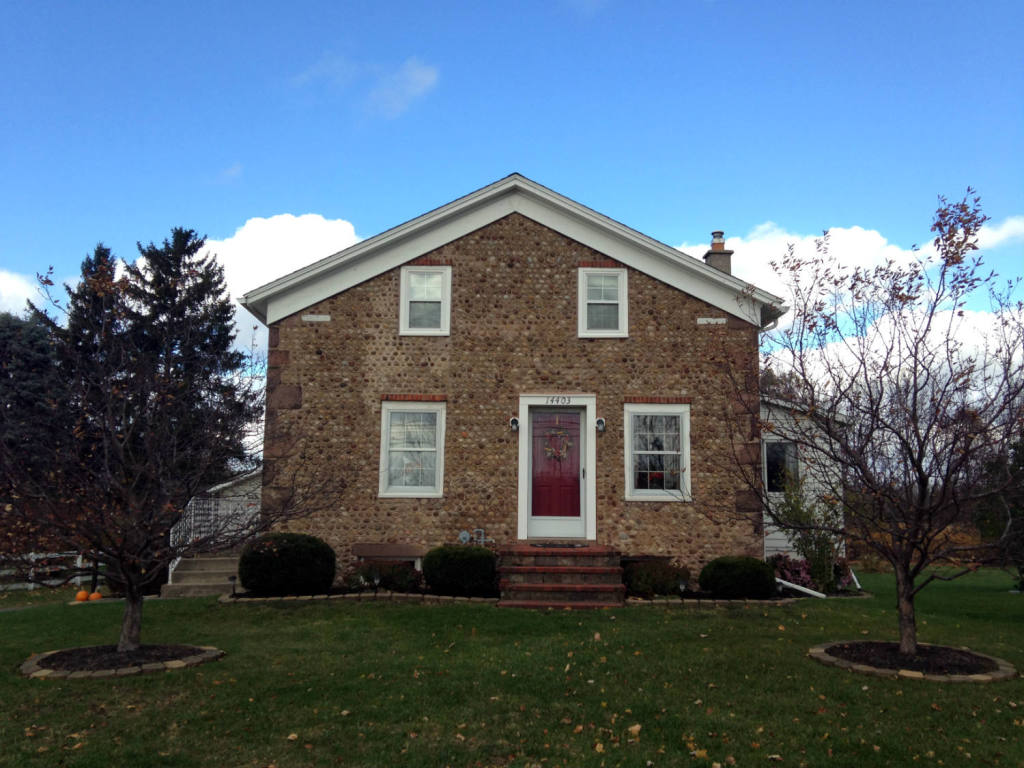
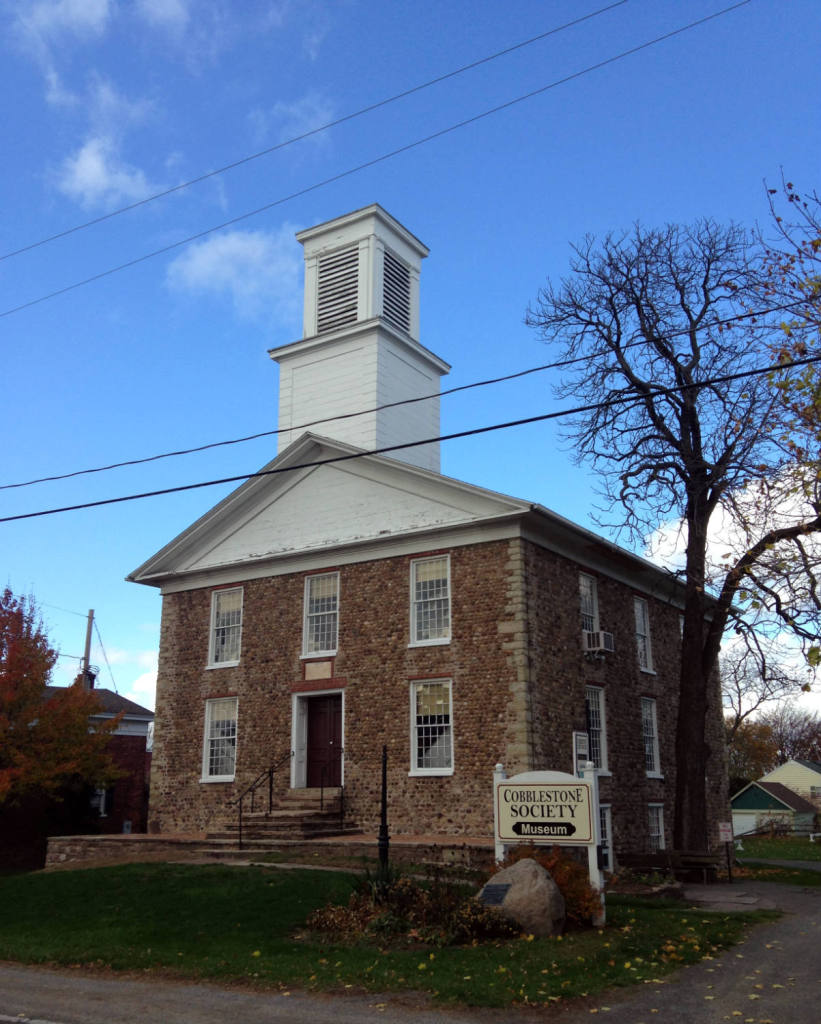
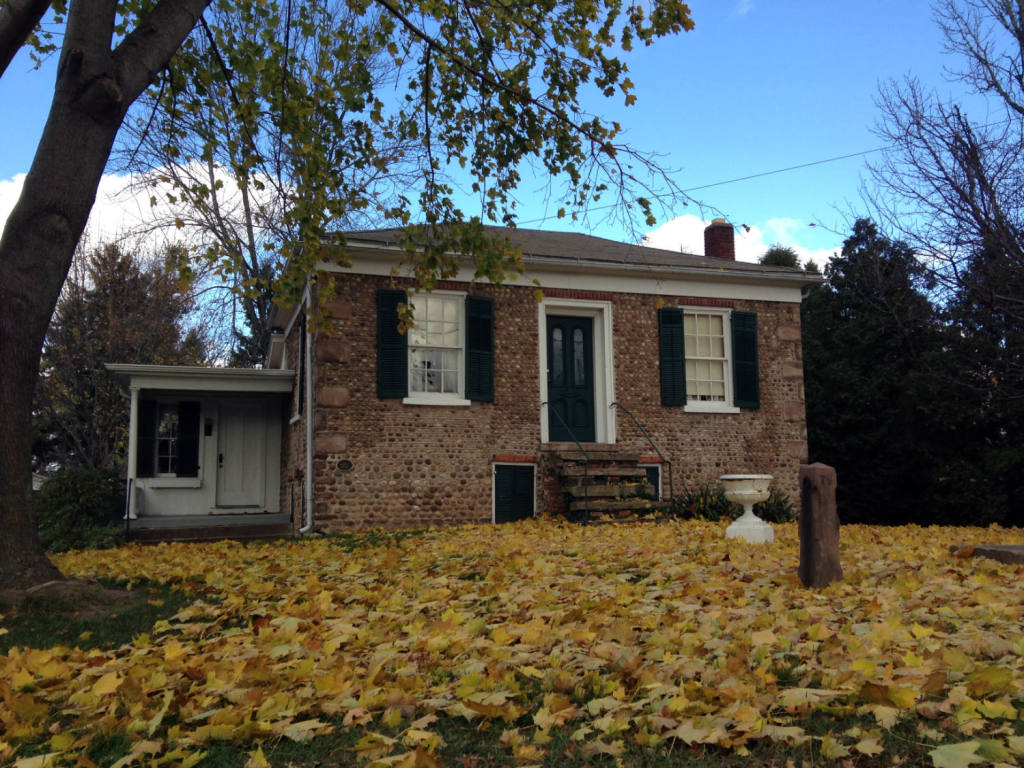
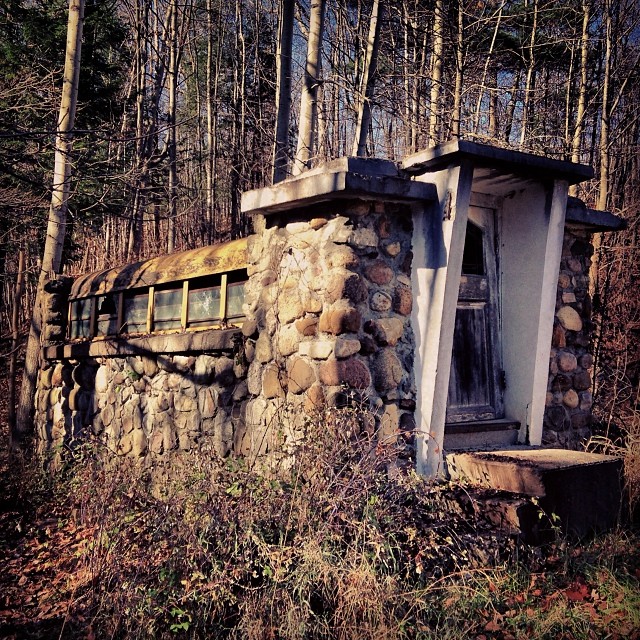

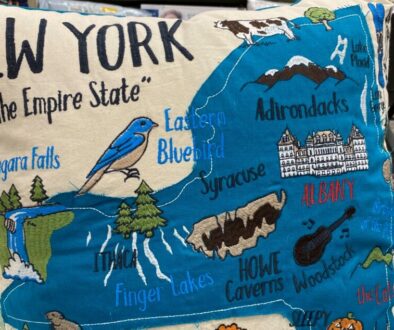
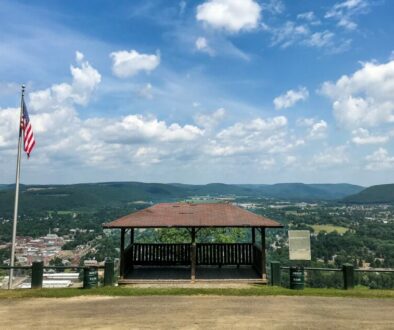
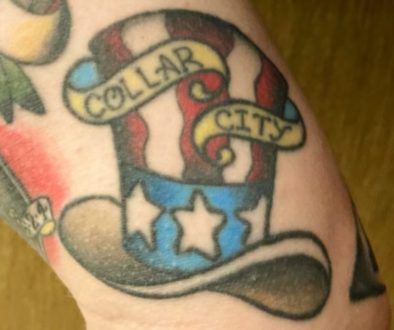
January 4, 2015 @ 10:51 am
I live on Quaker Rd. in Palmyra situated alongside the canal. There are several cobblestone houses surrounding my house. Now i know their origins from reading your article.
January 4, 2015 @ 4:43 pm
Glad you found this helpful Laurie! There definitely are some great examples in Palmyra, one of which was owned by one of the original Mormons who mortgaged his property to fund the printing of the Book of Mormon–I totally should’ve included that one. Next time…
March 21, 2016 @ 9:36 pm
The idea that cobblestone structures were created by newly-unemployed Canal stone masons is oft-repeated, but false. Cobblestone buildings were created during the 25 years after the Canal was completed because the stones were already there for thousands of years and the Canal created a need for new homes. Quoins could be cheaply shipped from quarries in Lockport by using the Canal to the construction site. After the Lockport locks were completed, the stone masons simply went home. They didn’t wait around a generation to reinvent themselves as cobblestone house builders.
January 4, 2015 @ 12:11 pm
Another excellent task for the upcoming year.
I have a book, put out by Rich and Sue Freeman, with the title, “Cobblestone Quest”.
It has information on what is a cobblestone, who built with them and why in our area.
Also has a list of 17 ‘tours’ ranging from around Lockport, and to the east of Geneva, around Weedsport.
The tours cover the cobblestone buildings around our western portion of the state.
Between the shore of Lake Ontario and the fields around what would become the canal, there are a lot of cobblestone buildings.
If you get a chance maybe you can get a copy of this book and it may add to the ideas you already have.
I wanted the book because I had the idea to follow most of the tours to see these structures.
As with some things, I never did the tours.
Have fun.
January 4, 2015 @ 4:38 pm
Very cool! I’m familiar with their work from the ‘Take a Hike’ series that I’ve always enjoyed. I’ll have to find this one too.
January 4, 2015 @ 12:20 pm
I forgot to mention something which may require more info.
The ‘smoke house’ you refer to located on Culver Rd. across from Sea Breeze Park, was originally a small building that the gentlemen of the time would go to, to smoke their cigars.
When the building was moved from a lot next to the Ridge-Culver Fire Dept., I think that was the description of it. The current location of the fire department building was where the house was that the smoke house was a part of.
I took your description of a ‘smoke house’ to be where meats and fish were smoked to preserve them.
I’m sure there has to be more information available, especially from Pat Wayne, the Irondequoit historian.
January 4, 2015 @ 4:40 pm
Ya know, I tried to find a history on that building, because I always figured it was a food-smoking-house too. But, as a cigar smoker myself, I’d LOVE now to know more about it. I’ll have to do some more digging and maybe I can find more with your direction to Pat Wayne. Many thanks!
January 4, 2015 @ 12:37 pm
I had a client who lived in a cobblestone house. He had told me he had to carry a specialized insurance rider on the house because there are so few people who can do repairs to the cobblestone.
January 4, 2015 @ 4:41 pm
Interesting. I guess I wouldn’t think of things like insurance being higher on a house like that, but it makes sense. Come time to sell my house, I probably won’t be being a cobblestone then! 😉
January 6, 2015 @ 7:32 am
I can’t believe that Wayne County has the most and you only included one. Serious omission here! You missed a fabulous one outside of Phelps as well. Some of those included in the article are quite mundane by comparison.
January 6, 2015 @ 8:26 am
You missed a few on Route 14 south of Geneva. If you travel south on 14 across from Anthony Road Winery there is a nice on there. Travel further south on 14 about 2 or 3 miles south of Dresden, there is a nice one just across from Leach Road and across from PreJean Winery. In Wyoming County, Castile, there is one that is listed on the Cobblestone Registry. It was my grandmothers place. It’s a Greek Revival and also has a cobblestone smoke house. It has real cobbles.
January 6, 2015 @ 8:04 pm
Years ago we lived in a Cobblestone in the Town of Mendon. It has since been added to the Historic Registry. Now I live in CA and can’t say I have ever seen a coblestone home out here, thanks for the Article
http://en.m.wikipedia.org/wiki/Sheldon_Cobblestone_House
January 17, 2015 @ 11:49 pm
Hi, Chris – noticed you started following my blog and thought I’d check you out! So glad I did! Nice to see you were in my neck of the woods to visit the cobblestones in Childs! I was married in the Universalist Church you included here and we dressed in the Ward House next door to prepare for the wedding. I look forward to reading more of your posts and hope that you will enjoy my blog, as well. Kim
June 28, 2017 @ 7:32 am
We also married there , and dressed next door. Beautiful place. We purchased a dillapitaded cobblestone home next door for renovation. After carefully removing all the interior material it has become a great lesson in the moethods used to build the walls. Very interesting.
January 18, 2015 @ 5:44 am
Hi Chris, A great challenge. Cobblestones have always fascinated me and I have collected many photos. You found many that I haven’t visited get. Exploring Upstate New York is my passion, I will have to return often. Tom The Backroads Traveller
January 18, 2015 @ 11:05 pm
We used to live in #9. It used to be a school house.
15 Religious Sites in NY |
February 4, 2015 @ 7:42 am
[…] find 15 examples of it from my jaunts around New York. My inaugural ’15 for 2015′ was cobblestone buildings, and in keeping with the building theme, I’ve decided that my second installment in the […]
February 16, 2015 @ 9:16 am
Hi Chris! Great work hunting down those cobblestones. My family owns one on the corner of route 15 (West Henrietta Rd) and Brooks Road, right next to the RIT Inn. I forget exactly what year it was built, but we’ve owned it since before WWII. It used to be a dairy farm that my grandfather ran, but we’ve long since given up the cows and it now sits unoccupied unfortunately.
15 Spots to 'Shop Local' in Rochester, NY |
March 22, 2015 @ 6:02 pm
[…] to find 15 examples of it from my jaunts around New York. My inaugural ’15 for 2015′ was cobblestone buildings and the second was spiritual sites. March has been way busier for me than I anticipated, so I […]
September 10, 2015 @ 3:48 pm
Chris,
First, nice blog – happy to discover it! Ten years ago when I first learned about New York’s cobblestone buildings there was virtually nothing of depth on the internet. Now there’s a lot. Wikipedia has an excellent entry and the National Park Service has what is probably the most informative document online. My interest began with the book Cobblestone Landmarks of New York State pub. by Syracuse Univ. Press ’78. In it street locations are paired with black and white photos. It has been a longstanding wish to present those with current photos which I began several years ago and am furthering now. I have a few posts you can see here: http://thewaterwall.blogspot.com/
I’d love to put up a link to your site on mine if that is cool with you.
August 23, 2016 @ 12:41 am
Wonderful site, I have been wanting to photograph every stone structure I can locate, including the limestone ones in the north who are often left in decay. Researching how they built the cobblestones in intense.
July 8, 2017 @ 8:08 am
I have lived in a cobblestone home for the past 26 years and have loved the history that it brings. It is the original ‘Barden Home”. It originally sat on 210 acres as a family farm.
when it first left the Barden family around 1969, the land around the home was sold to a farmer and the 4.3 acres surrounds this 4000+ sq ft living space. The home has been listed on the Historic Registry and has been on two house tours. I currently have the home listed for sale as it is too large for me to maintain. I am hoping that someone as adventuresome as I was will find the experience of owning a piece of history as thrilling as I have. Susan Loughnane, 2492 Ferguson Corners Rd, Penn Yan NY
August 4, 2018 @ 1:59 pm
Have you sold your house? I have become interested in cobblestone houses in this area of New York. Currently looking for a home. Thanks, Bob
August 13, 2018 @ 9:20 am
There’s some near Alabama, Oakfield area of ny. One right by a quarrying rt63 and one is at the end of ledge road it’s called the ledge egg farm. There both pretty old but unsure of the exact year. I’d love to know more about them and if the same people built them since they’re so close.
September 8, 2019 @ 9:46 pm
PBS did a show on Erie Canal. Hoped it would include the cobblestone houses, but didn’t. Enjoyed the article.
March 2, 2020 @ 11:37 am
A public internet release will be offered by The Cobblestone Society and Museum and the Landmark Society of Western New York in the spring of 2020 of the Cobblestone Info Base, a virtual library and repository of all known and found information on Cobblestone structures in North America. To-date, the Cobblestone Info Base includes about 950 existing and non-existing true cobblestone structures, circa typically 1820 to 1865, with about 6500 photographs. All structures are located with exact GPS coordinates with additional Google Maps street level (when available) and satellite views provided. The Info Base is based on the Robert Roudabush Survey, Richard Palmer’s blog Cobblestone Buildings of North America, Carl Schmidt books “Cobblestone Architecture” 1944 and “Cobblestone Masonry” 1966 (digitized in the entirety with permission), and the Martin and Sheila Wolfish Photographic Collection, and numerous other contributors.
This will be a living Info Base where information and imagery will be imported for years to come including links to external sources of information on the internet. The pre-release web testing version 1.0 is available at URL:
http://www.cobblestonemuseum.org/CobblestoneStructuresCatalog/CM0000.htm
Note that this URL may change when it is officially linked with The Cobblestone Society and Museum website. This is a serious pro bono effort of about 1500 hours over 18 months at the time of this posting.
Preserving the history of cobblestone architecture - Rochester BeaconRochester Beacon
March 16, 2020 @ 11:01 am
[…] a result of that architectural trend, our region now has the largest collection of cobblestone structures in the nation. It’s estimated that more than 1,000 cobblestone structures have been built in […]
Cobblestone Universalist Church - Childs, NY | Exploring Upstate
May 18, 2020 @ 3:48 pm
[…] most buildings. Because of the availability of cobblestones and limestone, you can find a lot of cobblestone architecture […]
April 5, 2022 @ 4:09 pm
Back in the ’60s, we stayed at what was called a tourist home in upstate NY. It was called The Cobblestone, and the owner, a widow who lived there, rented out the beautiful bedrooms to tourists like us for $5./night. In the morning, she made us breakfast on her wood-burning stove, complete with homemade strawberry jam for the toast. She had black and white postcards of her house, which is how I knew its name. She said the house was built in the late 1700s. Does anyone know this home, or what became of it?